Chromosome architecture and low cohesion bias acrocentric chromosomes towards aneuploidy during mammalian meiosis
- PMID: 39715766
- PMCID: PMC11666783
- DOI: 10.1038/s41467-024-54659-3
Chromosome architecture and low cohesion bias acrocentric chromosomes towards aneuploidy during mammalian meiosis
Abstract
Aneuploidy in eggs is a leading cause of miscarriages or viable developmental syndromes. Aneuploidy rates differ between individual chromosomes. For instance, chromosome 21 frequently missegregates, resulting in Down Syndrome. What causes chromosome-specific aneuploidy in meiosis is unclear. Chromosome 21 belongs to the class of acrocentric chromosomes, whose centromeres are located close to the chromosome end, resulting in one long and one short chromosome arm. We demonstrate that acrocentric chromosomes are generally more often aneuploid than metacentric chromosomes in porcine eggs. Kinetochores of acrocentric chromosomes are often partially covered by the short chromosome arm during meiosis I in human and porcine oocytes and orient less efficiently toward the spindle poles. These partially covered kinetochores are more likely to be incorrectly attached to the spindle. Additionally, sister chromatids of acrocentric chromosomes are held together by lower levels of cohesin, making them more vulnerable to age-dependent cohesin loss. Chromosome architecture and low cohesion therefore bias acrocentric chromosomes toward aneuploidy during mammalian meiosis.
© 2024. The Author(s).
Conflict of interest statement
Competing interests: The authors declare no competing interests.
Figures
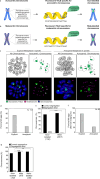
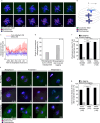
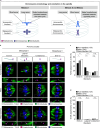
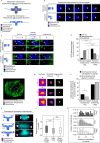
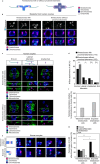

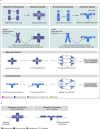
Similar articles
-
Meiotic Kinetochores Fragment into Multiple Lobes upon Cohesin Loss in Aging Eggs.Curr Biol. 2019 Nov 18;29(22):3749-3765.e7. doi: 10.1016/j.cub.2019.09.006. Epub 2019 Oct 31. Curr Biol. 2019. PMID: 31679939 Free PMC article.
-
Roles and regulation of the Drosophila centromere cohesion protein MEI-S332 family.Philos Trans R Soc Lond B Biol Sci. 2005 Mar 29;360(1455):543-52. doi: 10.1098/rstb.2005.1619. Philos Trans R Soc Lond B Biol Sci. 2005. PMID: 15915585 Free PMC article.
-
Age-dependent loss of cohesion protection in human oocytes.Curr Biol. 2024 Jan 8;34(1):117-131.e5. doi: 10.1016/j.cub.2023.11.061. Epub 2023 Dec 21. Curr Biol. 2024. PMID: 38134935 Free PMC article.
-
Aneuploidy in human eggs: contributions of the meiotic spindle.Biochem Soc Trans. 2021 Feb 26;49(1):107-118. doi: 10.1042/BST20200043. Biochem Soc Trans. 2021. PMID: 33449109 Free PMC article. Review.
-
Spindle formation, chromosome segregation and the spindle checkpoint in mammalian oocytes and susceptibility to meiotic error.Mutat Res. 2008 Mar 12;651(1-2):14-29. doi: 10.1016/j.mrgentox.2007.10.015. Epub 2007 Nov 9. Mutat Res. 2008. PMID: 18096427 Review.
Cited by
-
Protein-targeting reverse genetic approaches: the future of oocyte and preimplantation embryo research.Mol Hum Reprod. 2025 Apr 3;31(2):gaaf008. doi: 10.1093/molehr/gaaf008. Mol Hum Reprod. 2025. PMID: 40100642 Review.
References
Publication types
MeSH terms
Substances
LinkOut - more resources
Full Text Sources

